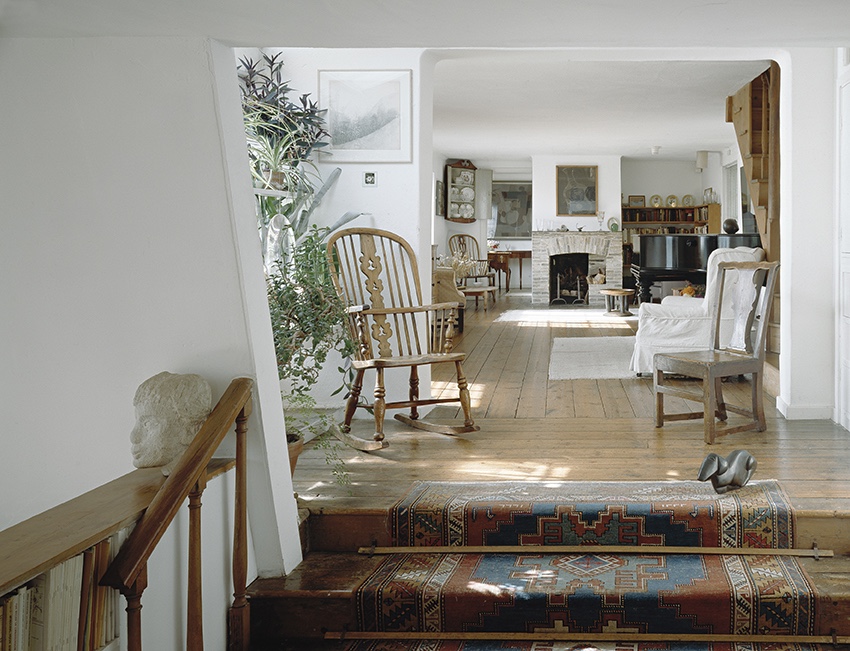See
Material Power: Palestinian Embroidery – at Kettles Yard

Kettles Yard is a beautiful house filled with beautiful objects, once the home to H.S. (Jim) Ede and his wife Helen, an art teacher, located in a quiet corner of Cambridge. It was always conceived as a ‘open house’ where visitors could appreciate art without the austerity of a traditional museum or public art gallery. After his time studying at the Slade School of Art, Jim became a curator at the Tate Gallery (in the 1920s and 30s) and immersed himself in the world of contemporary art – those celebrated and those yet to be known. A ‘friend to artists’, over the years he gathered an enviable collection, including paintings by Ben and Winifred Nicholson, Alfred Wallis, Christopher Wood, David Jones and Joan Miró, as well as sculptures by Henri Gaudier-Brzeska, Constanin Brancusi, Henry Moore and Barbara Hepworth.

The artworks were to be enjoyed within the context of the modest cottage, with other gathered objects. There was no extravagance, but for the love of arts, an authenticity, and the simple pleasures in life. There is an aesthetic discipline, but a warmth which reflected his character. Kettles Yard was simply a way of life.


Now in the custodianship of the University of Cambridge, with new building additions and contemporary galleries designed by Jamie Fobert Architects, Kettle’s Yard continues to impart his passion to open other people’s eyes and share his pleasure.
The current exhibition, ‘Material Power: Palestinian Embroidery’ explores the historical life and contemporary significance of Palestinian embroidery. This ancient and beautiful practice remains an important living tradition and the most prominent cultural material of Palestine today. Curated by Rachel Dedman, the exhibition looks at the ways in which embroidery, primarily undertaken by women, has evolved through a century of turbulent history for the Palestinian people.


On display are more than forty dresses and embroidered objects on display lent from important private collections in Jordan and Palestine. Every dress tells a story: whether about the lives of women with their astonishing skills and creativity in the early decades of the last century, or the trauma of displacement as a result of the war of 1948. Material Power reflects, in the decades since then, how the vibrant colours and patterns of Palestinian embroidery have become symbolic of nationhood, memory, and resistance. Alongside historic dresses are artworks by five contemporary artists, films of embroiderers speaking about their work and rarely seen archive material.
Material Power: Palestinian Embroidery until 29th October 2023
Visit and find out how to join the Friends of Kettles Yard kettlesyard.co.uk
Main photo: Kettle’s Yard, University of Cambridge. Photo: Paul Allitt.

